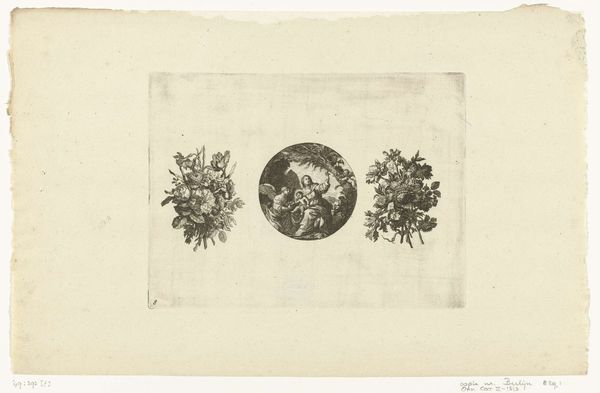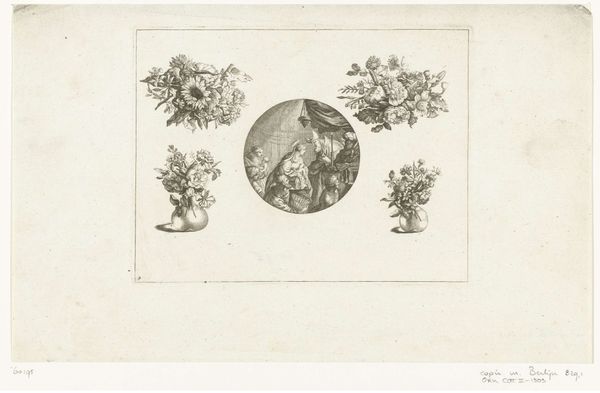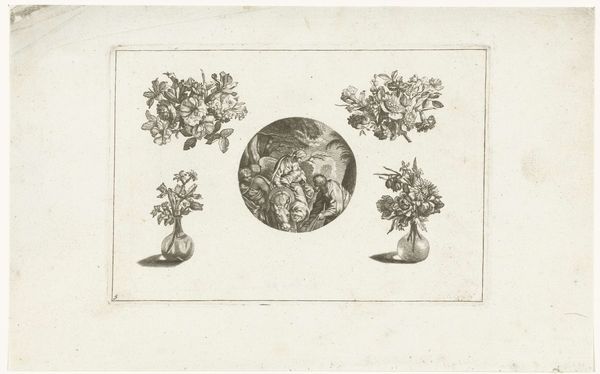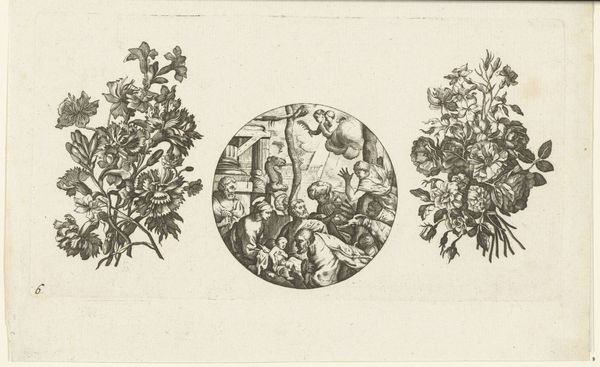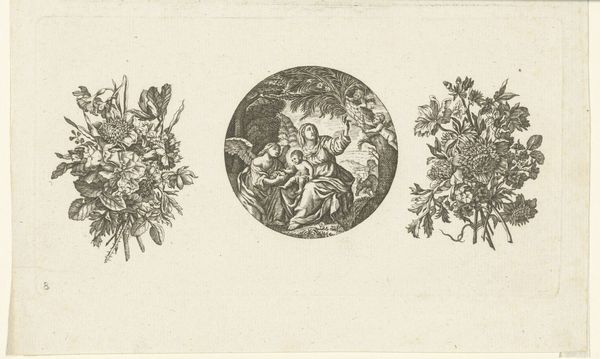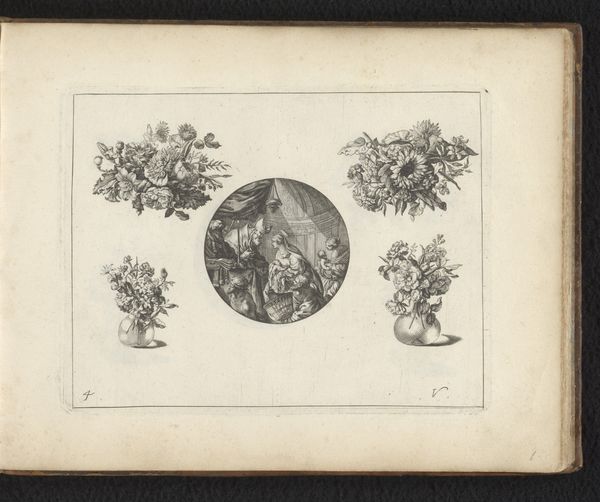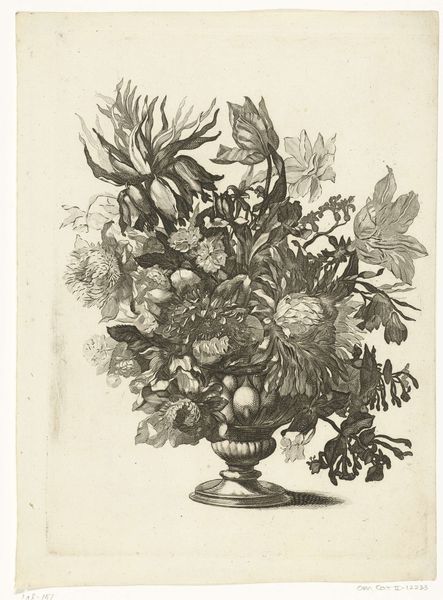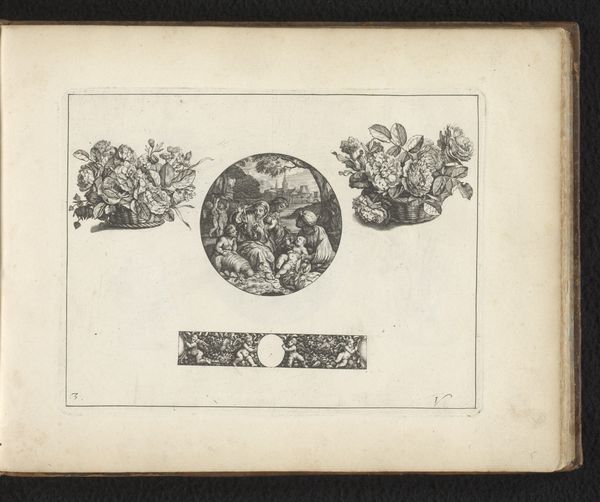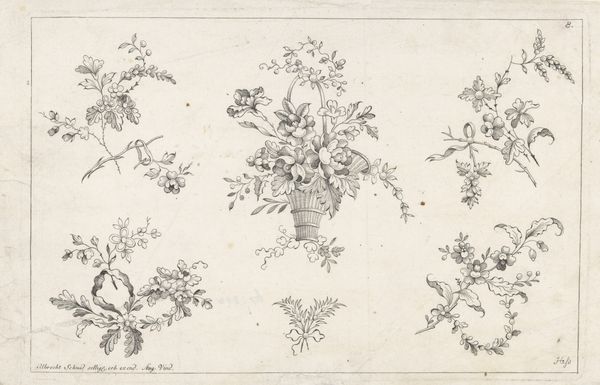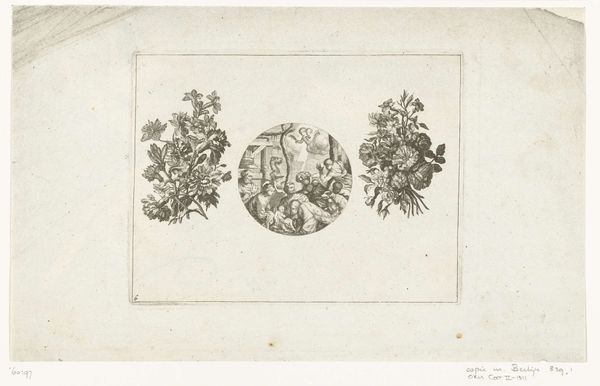
drawing, print, engraving
#
drawing
#
baroque
# print
#
islamic-art
#
engraving
Dimensions: height 96 mm, width 170 mm
Copyright: Rijks Museum: Open Domain
Curator: The first impression I get from this print is one of ordered grace and restrained elegance. It's beautifully composed, if a little austere, with the stark contrasts emphasizing a certain emotional restraint. Editor: Let's dive in. We're looking at "Horlogekast, boeketten en bloemenvazen", which translates to "Clock case, bouquets and flower vases," a print, engraving and drawing attributed to an anonymous artist sometime between 1631 and 1736. It is currently part of the Rijksmuseum collection. The materials speak to a particular mode of artisanal production. Engraving allowed for replicability and wider circulation, and suggests this piece wasn’t necessarily conceived as a singular "work of art", but more as a decorative template perhaps? Curator: That's fascinating! I'm immediately drawn to the central scene. It’s contained within a circle and depicts what appears to be a domestic interior with figures and floral garlands around them. What kind of symbolism do you see at play, considering its decorative function? Editor: The figures, and setting could signal a type of material wealth and power--suggested in this era by ownership of enslaved people. The flowers would represent commerce from around the globe at this time. If this print was integrated into an object such as a clock it would constantly reiterate themes of human industry, domestic comfort and commerce in peoples daily life. Curator: I see what you mean. The arrangement is clever because it brings together concepts of labour through flower production with domestic comfort, through a scene contained with interior architectural devices like an entryway or room. What's especially interesting is the way the surrounding floral arrangements mirror elements within the scene, which is an intriguing method of compositional unity! Editor: Agreed. I think examining this piece from the perspective of materials helps to uncover its function and to reconsider ideas about artisanal, "art," craft, commerce and enslaved people during this era and region. Curator: Indeed, analyzing this print through its imagery reveals some complex ideas that connect back to historical craft and decorative sensibilities, creating this quiet yet deeply symbolic aesthetic. Editor: I agree completely, it's always fruitful to dig under the surface!
Comments
No comments
Be the first to comment and join the conversation on the ultimate creative platform.
